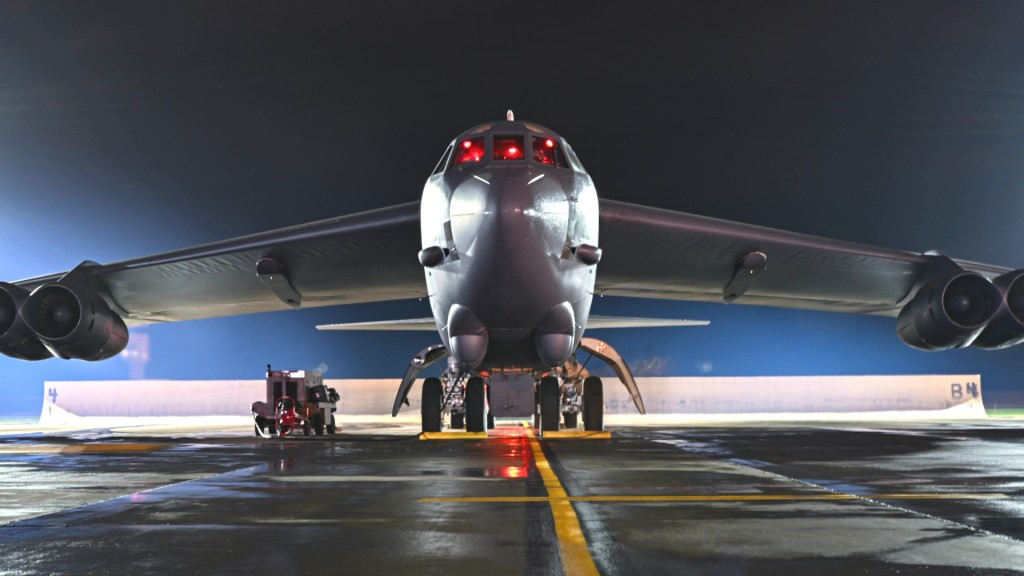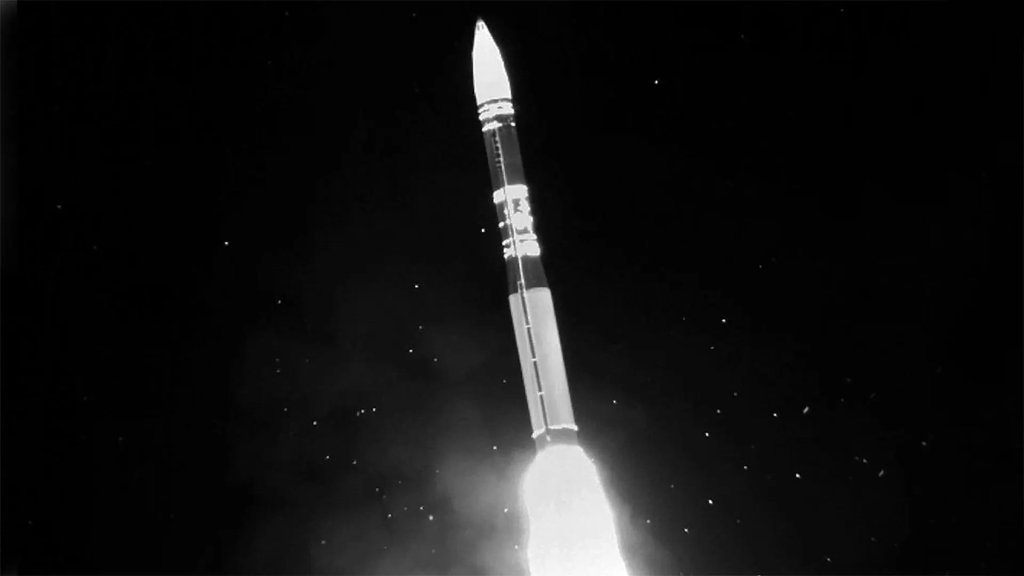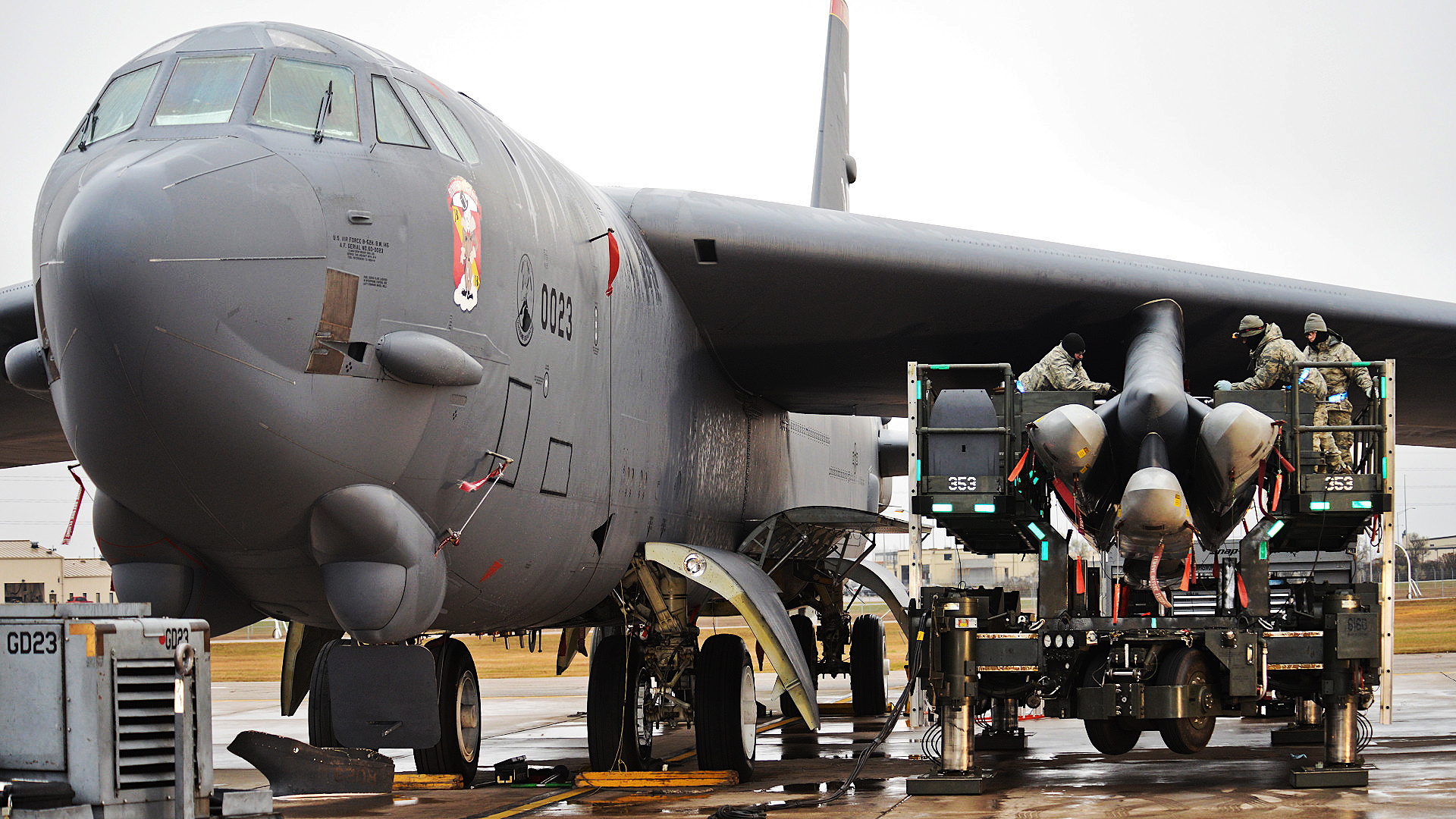Members of Congress are pushing to demand that the U.S. Air Force make all of its remaining B-52H bombers nuclear capable again after the likely sunset of a key arms control deal just shy of two years from now. Specific details about what it would take to actually do this come from a perhaps unexpected source: Russia.
Different versions of the annual defense policy bill, or National Defense Authorization Act (NDAA), for the upcoming 2025 Fiscal Year are currently making their way through the House of Representatives and the Senate, as Defense News reported last week. Both bills, which would have to be reconciled before being put to a final vote, already contain similar provisions regarding restoring nuclear capability to some 30 of the Air Force’s 76 B-52H bombers. The service denuclearized those bombers to meet the provisions laid out in the New Strategic Arms Reduction Treaty (New START) with Russia. New START came into force in 2011 and is currently set to expire in February 2026 – something we will come back to later. The Air Force presently plans to keep flying what will become B-52Js after receiving new engines, radars, and other extensive modifications through at least 2050.
The War Zone video below provides a detailed overview of the Air Force’s current B-52 modernization plans.

Suitably configured B-52s are also in line to be armed with forthcoming AGM-181A Long Range Stand-Off (LRSO) cruise missiles, which will supplant the AGM-86Bs they currently employ in the nuclear strike role. The AGM-86B is currently the only nuclear weapon the bombers are certified to carry.
As it stands now, New START places hard limits on how many strategic missiles (defined as intercontinental and submarine-launched types) and nuclear-capable heavy bombers, total “warheads,” and deployed and non-deployed “launchers,” the United States and Russia can have at any one time. For treaty purposes, a nuclear-capable heavy bomber also counts as a single warhead and a single launcher. In response to these requirements, the Air Force stripped the nuclear capability from the aforementioned portion of the B-52H fleet, turning them into still highly capable conventional-only strike platforms.

Exactly how much time and energy would be required to re-nuclearize the currently conventional-only B-52Hs, or how much those modifications might cost, is unclear.
However, in December 2018, Russian authorities sent a letter to their U.S. counterparts, which, in part, detailed the planned modifications to remove the nuclear capability from the B-52Hs. The Wall Street Journal obtained and then published a copy of that letter in January 2019. The main purposes of the missive were to complain about limited and potentially readily reversible steps the U.S. military had taken to meet its New START obligations, as well as reject accusations that it was violating the treaty’s terms itself, as you can read more about here.

“Three years ago the U.S. side declared its intention to convert B-52H heavy bombers by rendering them incapable of employing nuclear armaments by removing the nuclear code enabling switch and interconnection box, mounting a code enabling switch inhibitor plate, removing applicable cable connectors, [and] capping applicable wire bundles,” according to the letter. “However, in the course of the exhibition [of the first denuclearized B-52H in 2015] the Russian inspectors were unable to verify that the conversion procedures declared and applied by the United States satisfy the Treaty requirement on rendering a heavy bomber incapable of employing nuclear armaments.”
What additional steps the U.S. military took in response to these complaints are not entirely clear. It is known that declared conventional-only B-52Hs also lack a pair of prominent antennas, one on either side of the rear fuselage, making it easy to visually distinguish them from nuclear-capable ones.
It is worth noting that the December 2018 letter came from a Russian regime that has become notorious for arms control treaty violations and for deflecting from allegations about its malign behavior by accusing others of similar transgressions. At the same time, the description of the modifications to remove nuclear capability from the B-52Hs is in line with what experts have said is likely the case.
“The restoration could probably be done without much difficulty. The necessary wiring is probably still in place… and physical components that had been removed could be re-installed,” Defense News reported last week, citing Mark Gunzinger, currently Director of Future Concepts and Capability Assessments at the Air & Space Association’s Mitchell Institute for Aerospace Studies. Gunzinger is also an Air Force veteran who flew B-52s.
“This would cost a great deal of money,” Representative Adam Smith, a Democrat from Washington State and the ranking member of his party on the House Armed Services Committee, did say last week, per Defense News. “Also, they’re currently trying to extend the life of a number of B-52s out to 2050, which they think they can do. This would be another added expense to that.”
Smith’s comments followed news that the B-52 re-engining effort and radar upgrade program are experiencing cost growth and delays.
It does remain to be seen if the final NDAA for fiscal Year 2025 retains the provision regarding B-52 nuclear capability whenever it is ultimately finalized, passed, and signed into law. There does look to be significant bipartisan consensus on this issue.
The indication is also that any such legal requirements for the Air Force to give its conventional-only B-52s back their nuclear capability won’t kick in until New START sunsets and could be overridden by a future arms control agreement. While U.S. and Russian authorities agreed to an 11th-hour extension of New Start in 2021, the likelihood of the two parties reaching any sort of deal, at least in the near term, looks exceedingly unlikely. Last year, the Russian government formally suspended its participation in New START primarily over ongoing U.S. military assistance to Ukraine. Russia’s President Vladimir Putin also demanded that any future agreement include France and the United Kingdom. On the U.S. side, there has been a similar push to include China and its rapidly growing nuclear arsenal, which authorities in Beijing have repeatedly rebuffed.
The likely end of New START has prompted concerns about a new nuclear arms race well beyond the possibility of just restoring nuclear capability to the entire B-52 fleet. When it comes to the American nuclear arsenal, members of Congress are also pressing the U.S. military to field a new nuclear-armed sea-launched cruise missile. There has been talk about loading the Air Force’s future LGM-35A Sentinel intercontinental ballistic missiles (ICBM) with multiple warheads, as well. The service’s existing LGM-30G Minuteman III ICBMs each only have a single warhead currently due to arms control agreements with Russia.

There are also concerns about the potential for a broader global nuclear build-up in response to developments in the United States and Russia absent a replacement for New START.
Whatever it might take the Air Force to give nuclear capability back to all of its B-52 bombers in the end, Congress is pressing ahead with plans to compel the service by law to do so in the increasingly likely event that New START expires without a replacement.
Contact the author: joe@twz.com
